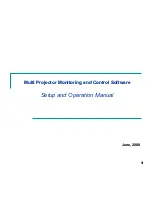
Archive owner
An archive owner is the user who saved the archive to the destination. To be more precise, this is the
user whose account was specified when creating the backup plan in the
Where to back up
step. By
default, the plan's credentials are used.
Plan's credentials and task credentials
Any task running on a machine runs on behalf of a user. When creating a plan or a task, you have the
option to explicitly specify an account under which the plan or the task will run. Your choice depends
on whether the plan or task is intended for manual start or for executing on schedule.
Manual start
You can skip the
Plan's (Task) credentials
step. Every time you start the task, the task will run under
the credentials with which you are currently logged on. Any person that has administrative privileges
on the machine can also start the task. The task will run under this person's credentials.
The task will always run under the same credentials, regardless of the user who actually starts the
task, if you specify the task credentials explicitly. To do so, on the plan (task) creation page:
1.
Select the
Advanced view
check box.
2.
Select
General -> Plan's (Task) credentials -> Change
.
3.
Enter the credentials under which the plan (task) will run.
Scheduled or postponed start
The plan (task) credentials are mandatory. If you skip the credentials step, you will be asked for
credentials after finishing the plan (task) creation.
Why does the program compel me to specify credentials?
A scheduled or postponed task has to run anyway, regardless if any user is logged on or not (for
example, the system is at the Windows "Welcome" screen) or a user other than the task owner is
logged on. It is sufficient that the machine be on (that is, not in standby or hibernate) at the
scheduled task start time. That's why the Acronis scheduler needs the explicitly specified credentials
to be able to start the task.
2.5
Backing up dynamic volumes (Windows)
This section explains in brief how to back up and recover dynamic volumes (p. 150) using Acronis
Backup & Recovery Server OEM. Basic disks that use the GUID Partition Table (GPT) are also
discussed.
Dynamic volume is a volume located on dynamic disks (p. 149), or more exactly, on a disk group (p.
149). Acronis Backup & Recovery Server OEM supports the following dynamic volume types/RAID
levels:
simple/spanned
striped (RAID 0)
mirrored (RAID 1)
a mirror of stripes (RAID 0+1)
RAID 5.
Summary of Contents for Backup & Recovery Server OEM
Page 1: ...User s Guide...
















































